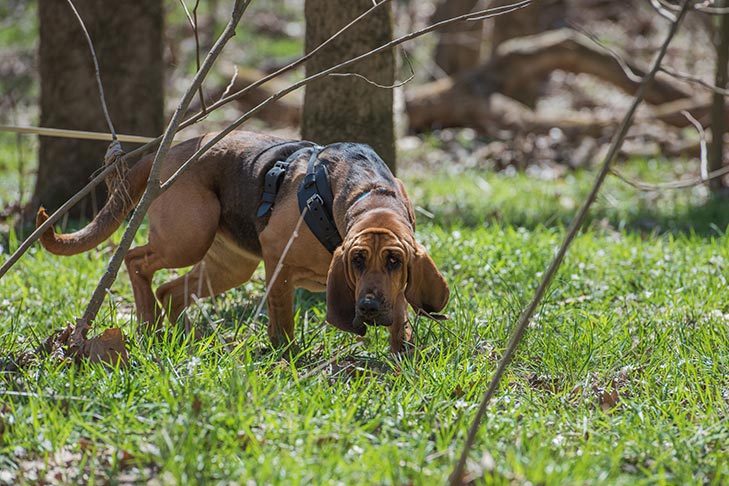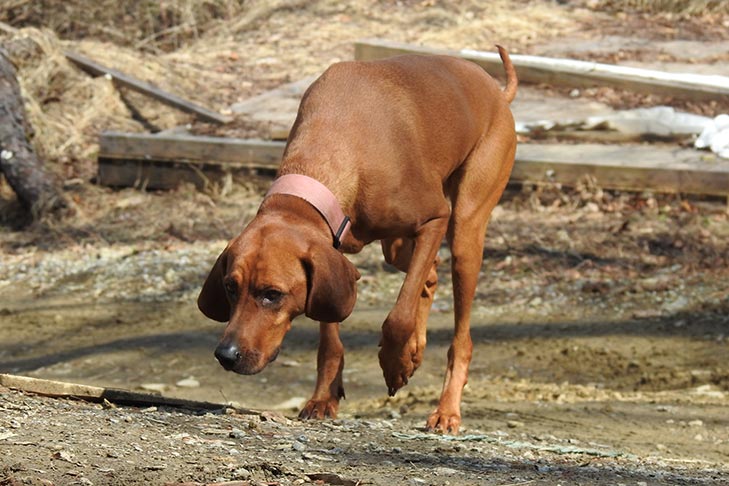You work hard to teach your dog good manners. There’s one area, though, where you probably won’t have much success: Asking them to “stop being so nosey!” It won’t work because your dog’s keen sense of smell – which is 100,000 times stronger than humans – makes him naturally “nosey,” and thus innately ideal for the sport of Tracking. In the world of working dogs, these skills are put to incredible use for emergency search-and-rescue.
So what do you do with your ever-nosey dog? Get them involved in an AKC Tracking event where they can sniff and smell to their heart’s content, and demonstrate that natural ability to recognize and follow a scent. It’s the perfect way for you and your dog—whether purebred or mixed breed—to enjoy many hours together, outside in the fresh air, honing those natural abilities. Champion trackers can compete in the AKC National Tracking Invitational.
-
Eligibility
+
Any breed can compete. Dogs must be:
- At least 6 months of age.
- In excellent physical and mental condition.
- Have an AKC number via one of the following:
- AKC Registration Number – This number is provided to a dog owner via a registration certificate received from the previous owner, or via a puppy registration paper given to the new owner by the breeder.
- Purebred Alternative Listing (PAL) – If a dog is purebred but an AKC Registration Number is not possible, owners can apply for a PAL number.
- AKC Canine Partners Number – This number is given to either mixed breed dogs or a purebred.
- Foundation Stock Service®(FSS) Number – This number is used for breeds whose status is currently in the foundational stage of being recorded into our registry and requires a copy of the dog’s pedigree.
In addition:
- Spayed and neutered dogs are eligible to participate in these events, but females in season are not.
- Dogs that are deaf are eligible to participate, but blind dogs are not.
- No dog may compete if it is taped or bandaged or has anything attached to it in any way for medical purposes.
-
Get Started
+
Since all dogs have a natural ability to follow a scent, any breed is capable of learning to track. The best way to hone your dog’s tracking skills is to find a Tracking class at your local AKC club. Tracking requires very little equipment. You just need a harness, a 20-to-40 foot lead, a few flags to mark your track, and an open grassy area free of obstacles such as roads, ditches, or woods.
You can then decide if you want to test his abilities in a Tracking Dog Test (TD). It’s a non-competitive test in which your dog follows a path to find article(s) dropped along the way. There’s no time limit as long as your dog is “working.” Before you enter a Tracking Dog Test (TD), you must have the dog certified by an AKC-approved or provisional judge. This certification form must accompany the entry form.
How a Tracking Test Works
For the host club and the two judges, a tracking test is a two-day commitment, regardless of weather. Tracking tests are usually held on Sunday, but the judges and tracklayers spend most of Saturday plotting a track for each dog. The judges draw charts of each track indicating landmarks that will allow them to locate the track with flags that mark the turns. The flags will be removed when the tracklayers walk the track the morning of the test. On the morning of the test, the exhibitors gather for a “draw,” which determines the order dogs are to exhibit. After the tracks have aged the required amount of time, the exhibitor puts the harness on the dog, attaches a 20-to-40-foot lead and begins the track. The dog is not allowed off lead at any time. The dog must follow the path the tracklayer has walked and find the article(s) dropped along the track. Judges follow the dog and handler to determine if the dog is on or off the track. If the dog is off the track and the judges determine the dog cannot return, one judge will blow the whistle signaling the dog has failed. There is no time limit as long as the dog is working. If the dog follows the track and finds the article(s) placed on the track, he earns the tracking title for the level at which he is exhibiting. - Find An Event +
- Resources +




